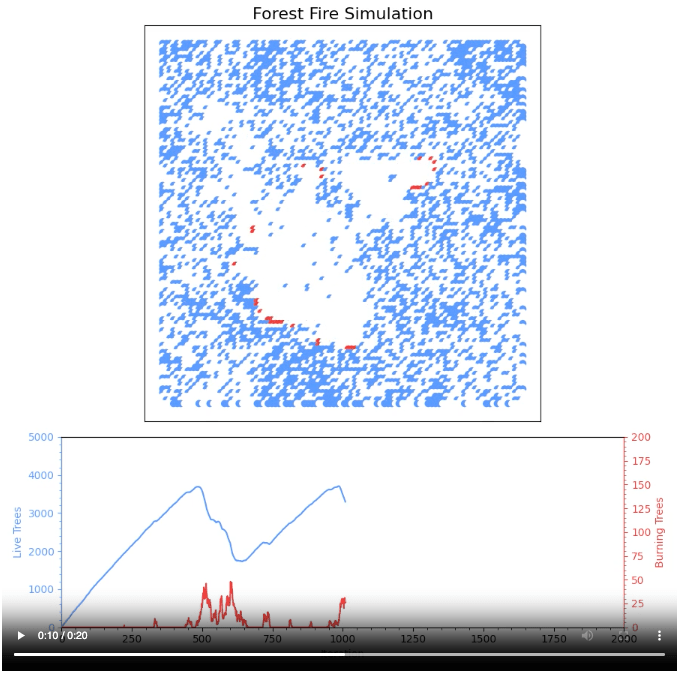By Jonathan Tan, PhD candidate, Western University
Using Python code to simulate forest fires
This set of simulations at the link below is inspired by how a forest fire spreads.
The occupied (inactive or active) nodes represent trees, and the active nodes, in particular, represent burning trees.
A tree can catch on fire randomly (like from lightning) or from a neighbouring tree already on fire.
Once a tree is on fire, it’ll burn down and become an empty node in the next round.

This model uses two stochastic rules and two deterministic rules.
This model also allows for a fire front, which is a big wave of burning trees, to develop when one tree catches on fire and then sets all its neighbours on fire, and then they set their neighbours on fire, and so on.
This can create a sort of “avalanche” of burning trees, which is fascinating to watch. But, as we’ll see, this isn’t the only surprising thing that can happen in this model.
See the Python code
Binder
Google CoLab [>18 years old or district license]
References
- 2023 Canadian wildfires. (2023, July 3). In Wikipedia. https://en.wikipedia.org/wiki/2023_Canadian_wildfires
- Charbonneau, P. (2017). Natural complexity: A modeling handbook. Princeton University Press.
- Government of British Columbia. (n.d.). Wildfire management strategies. Retrieved July 3, 2023, https://www2.gov.bc.ca/gov/content/safety/wildfire-status/wildfire-response/management-strategies
- Petroff, M. A. (2021). Accessible Color Sequences for Data Visualization (arXiv:2107.02270). arXiv. http://arxiv.org/abs/2107.02270
